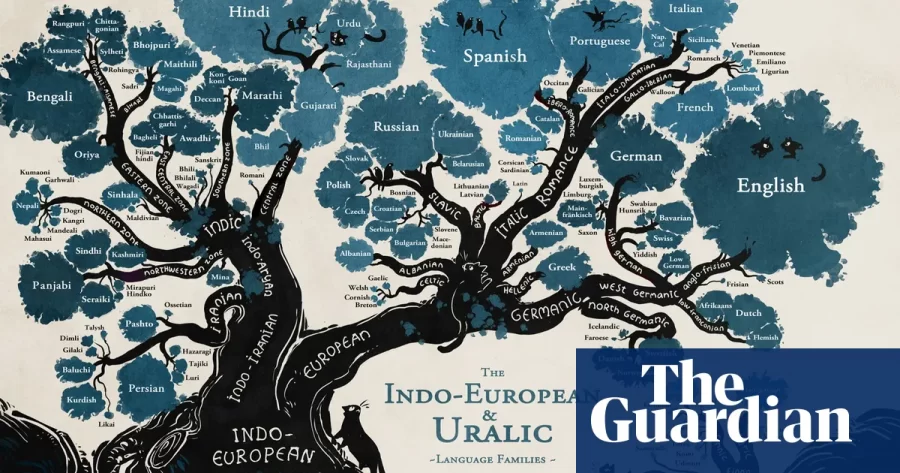Where Does the English Language (and Others) Really Come From?
The English language did not always exist in our world. The language had to have stemmed from one parent language, but what is it?
The English language is one of the most widely spoken languages in the world today (1,121 million speakers) alongside Mandarin Chinese (1,107 million speakers), Hindu (698 million speakers), Spanish (512 million speakers), and French (284 million speakers) (Lingua Language Center).
However, these languages did not always exist. They stemmed from one parent language known as Indo-European (√IE), in which Jacob Grimm, F. Max Muller, and several others discovered Sanskrit, in which numerous grammatical technicalities were used in languages that were thought to not be like one another. This led to the thought that there was a possibility of there being one language that our modern-day languages stemmed from. Thus, with this theory in mind, when we begin from the Indo-European language, it is thought that it sectioned off into five other motifs, which are Germanic, Italic, Slavic, Hellenic, and Sanskrit (Indo-European languages summary, 2023).
Germanic split into Old High German, Norse, and Low German. The High German and Norse paths ended, but Anglian, Saxon, Dutch, and Flemish all stem from Low German. From there, the Saxon and Anglian motifs combined into Old English, which then intertwined itself with French (which stems from the Italic motif) to create Middle English, which then evolved to Modern English (Farrow, Intro to Mythology).
The Italic motif immediately dropped down into Latin, which then split into Modern Italian, Romanian, French, and Spanish. As mentioned before, French then combined with Old English to create Middle English (Indo-European languages summary, 2023).
Slavic is quite straight forward; it split from that motif to Russian, Serbian, Croatian, and Polish. This “tree” then ends at the moment, as no other motifs have been formed from Slavic (Farrow, Intro to Mythology).
Hellenic is a bit more complicated, and it first divided into Aeolic, Achaean, Doric, and Ionic. Then, from Aeolic, Doric, and Ionic (which are considered Ancient Greek dialects), they combined to create Koine (which is otherwise known as Hellenistic Greek). After, Koine was transformed into Modern Greek (Indo-European languages summary, 2023).
Sanskrit is also quite simple, as it formed into Bengali, Hindi, and other languages used within modern India (Farrow, Intro to Mythology).
The image attached provides a more in-depth picture of the Indo-European tree, as this list is merely a condensed form of it to give insight on the overall message. However, with this list, it should entail that no language is “superior” to one another, nor is one less important. All languages came from the same place, so please be kind to one another.
Works Cited
Farrow, J. G. (2019). Introduction to Mythology (3rd ed.). Kendall Hunt Pub Co.
Indo-European languages summary. (n.d.). Encyclopedia Britannica. https://www.britannica.com/summary/Indo-European-languages
Your donation will support the student journalists of Dakota High School. Your contribution will allow us to purchase equipment and cover our annual website hosting costs.

Jade Lilly is a senior at Dakota High School. This is her first year writing for the Dakota Planet, but she has plenty of experience towards writing professional...














